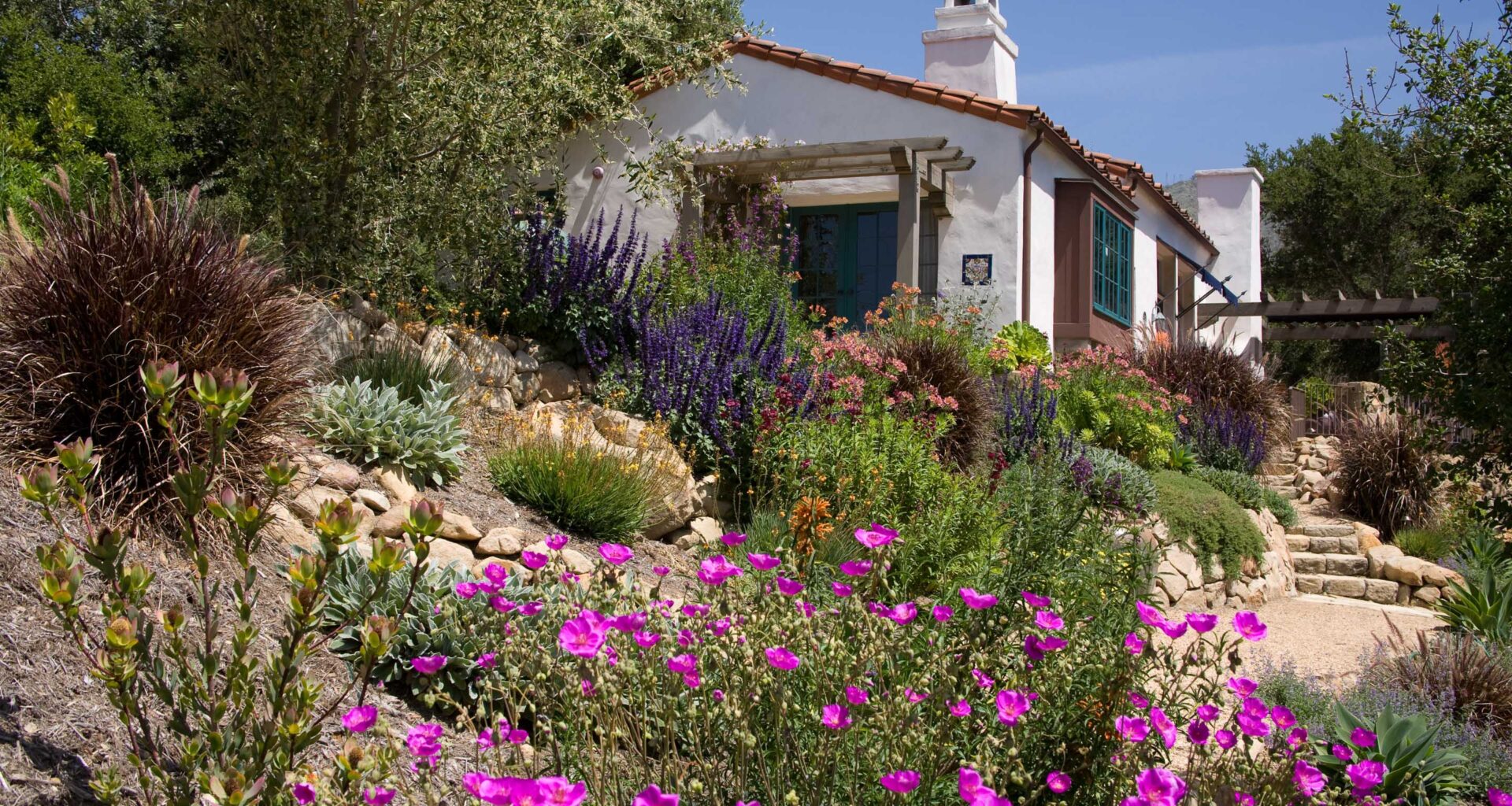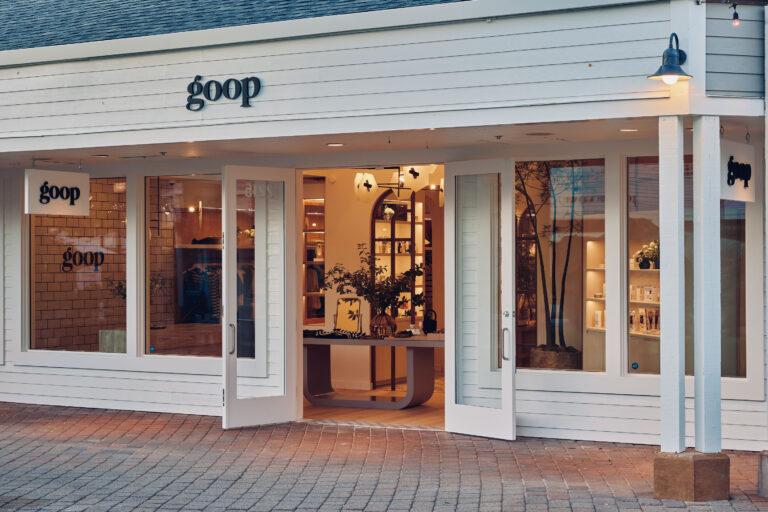
“Dirt is my thing. It really is,” says Margie Grace, founder of Grace Design Associates, a leading landscape design/build studio in Santa Barbara. Such is the nature of an outdoor girl. One of five children born to young parents in rapid-fire succession, Margie Grace was raised to dig in and make do.
“We were broke,” she adds, with a large, expressive laugh. “I had no idea we were broke. Everyone just worked—gardening, sewing clothes, refurbishing old things. I learned to build by just tagging along. It’s how I learned to do all the things I do.”
Much can come from rich soil, and in Margie Grace’s case, this means hundreds of rapturous outdoor environments, many created with the sensibility of her native Southern California. These designs are a kaleidoscope of her expertise, which includes studies in life and earth sciences as well as coursework in landscape architecture at UCLA. Forging a more unorthodox path than some in her trade is only to her benefit.
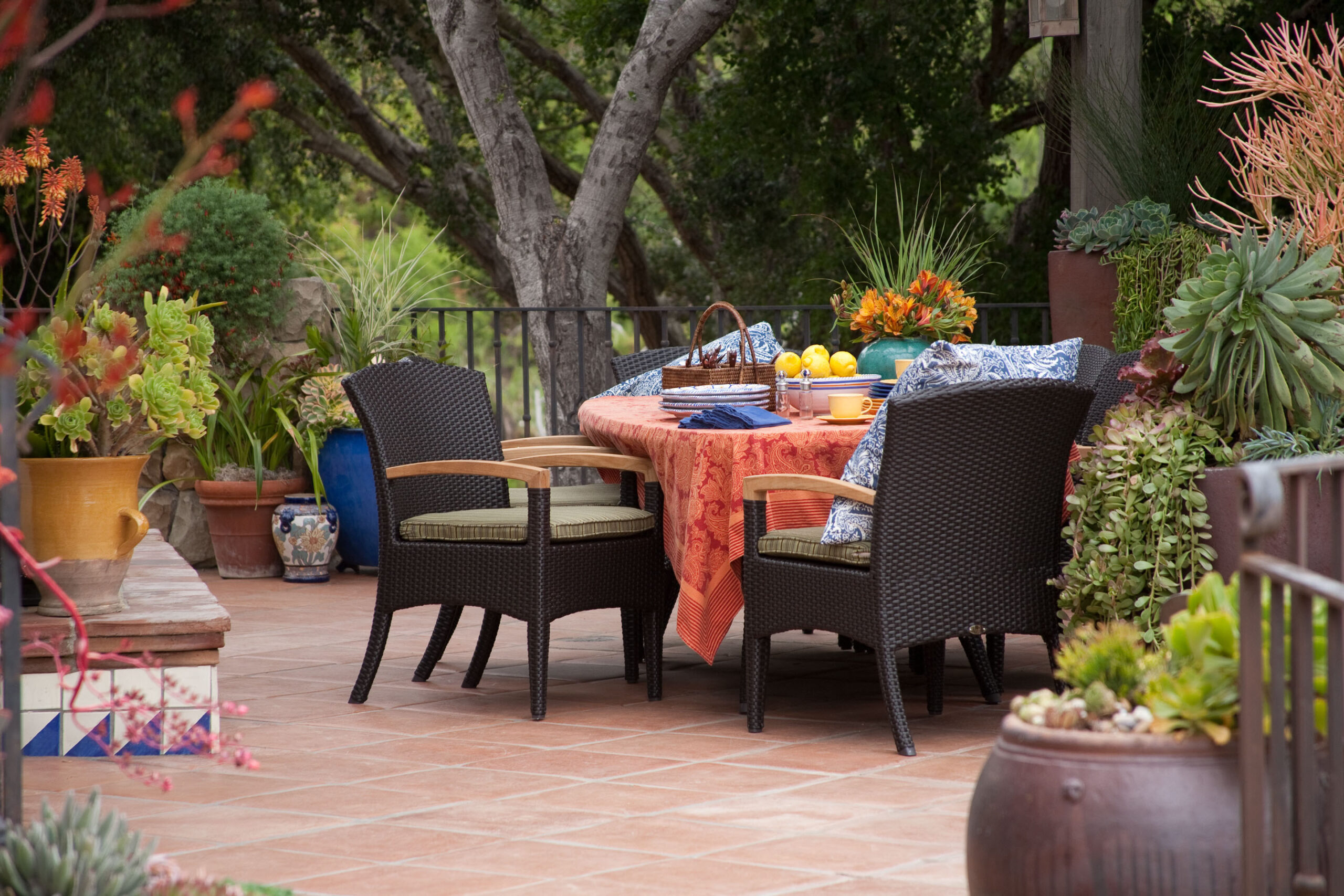
“I came in through a different door, and I carry a different set of tools,” she says. “I earned a seat at the table just with my body of work.”
And what works, including projects at the iconic Greystone Mansion in Beverly Hills, Patina Farm in Ojai, and a Montecito garden restoration project that earned a Best in Outdoor Living award from venerated magazine Veranda.
Uncontrived, lush with exotica and featuring ponds and porticos, stonework and sculpture, “garden” actually seems too provincial a term for the hybrids of function and fantasy that Margie Grace creates. Hers is a fine eye and a remarkable hand.
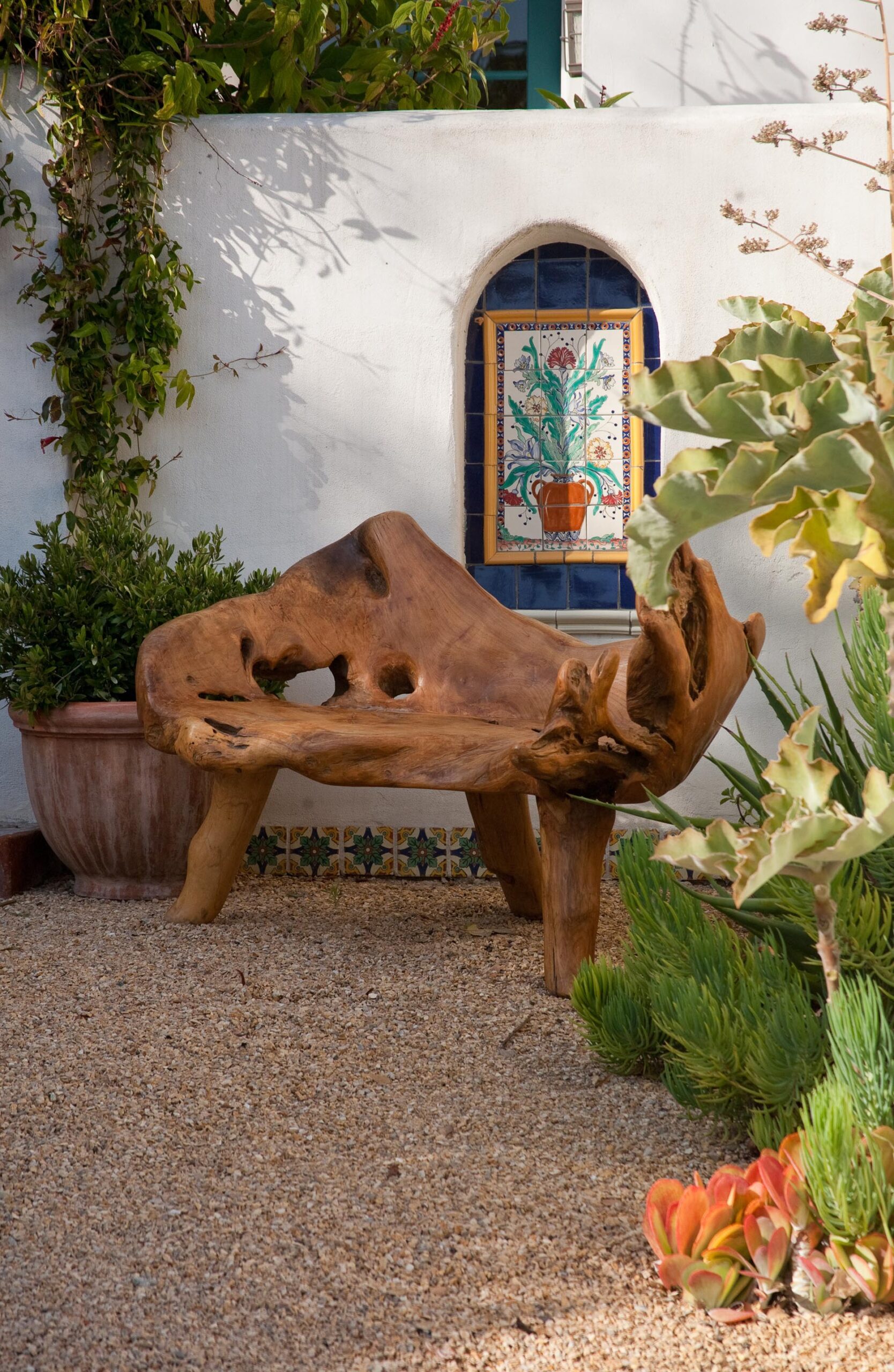
“As a licensed landscape contractor, I build what I design,” she says. “That’s when my work took a big leap forward. There is no separation between design, installation, and maintenance, it’s all one and happens on a continuum. Unless it’s integrated, it doesn’t work—period.”
This is how she thinks too, both pragmatically and painterly. Much like an artist, she uses “broad and fine brushstrokes” to transform a two-dimensional canvas into a three-dimensional work of art.
And in a systematic fashion; first is attending to infrastructure beneath the ground, then to its surface with the layering of elements. Rocks, for instance, are not so much placed as they are selected and then worked such that their shadows will cause additional depth or bring color forward. From there the garden grows.
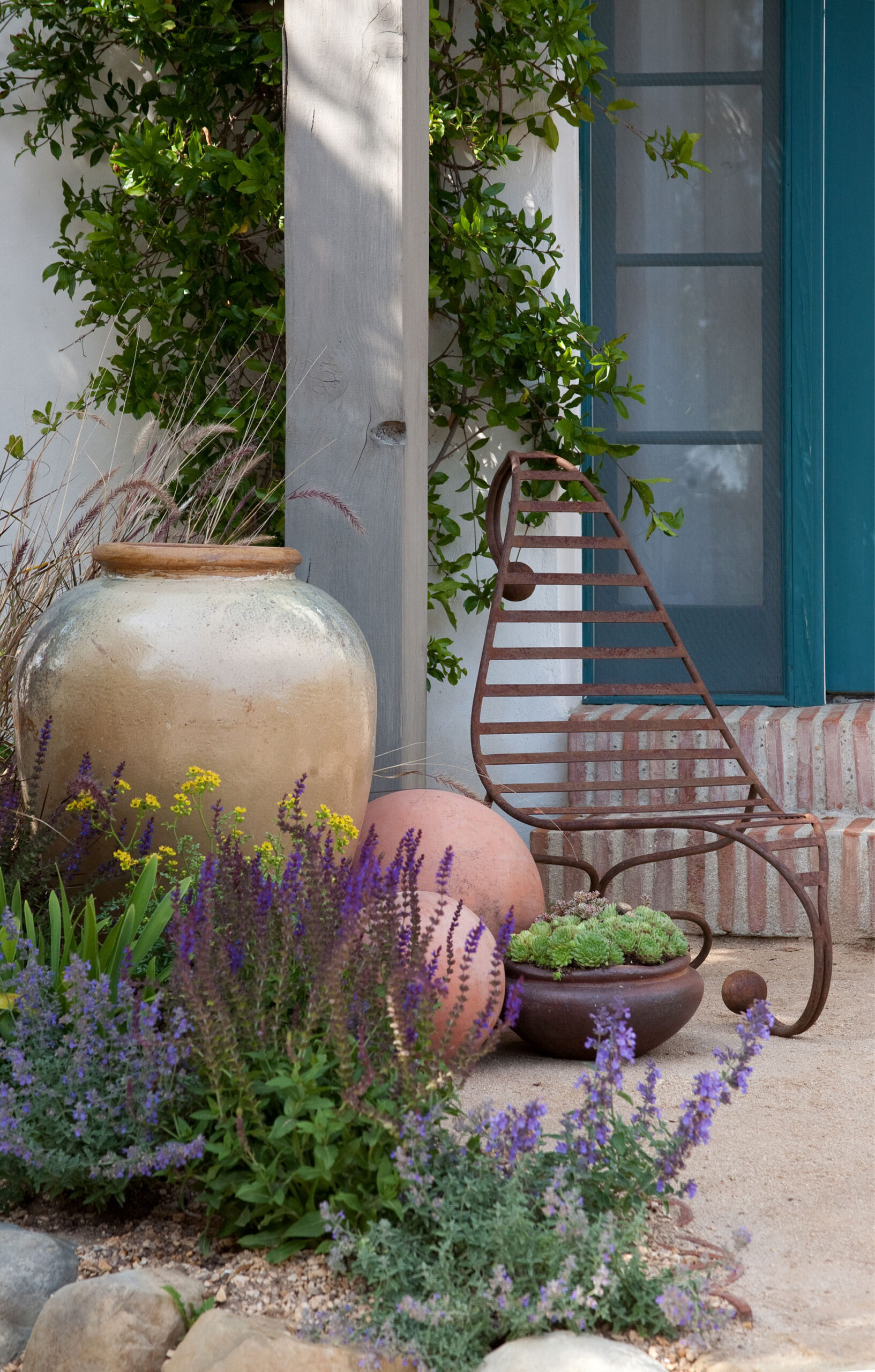
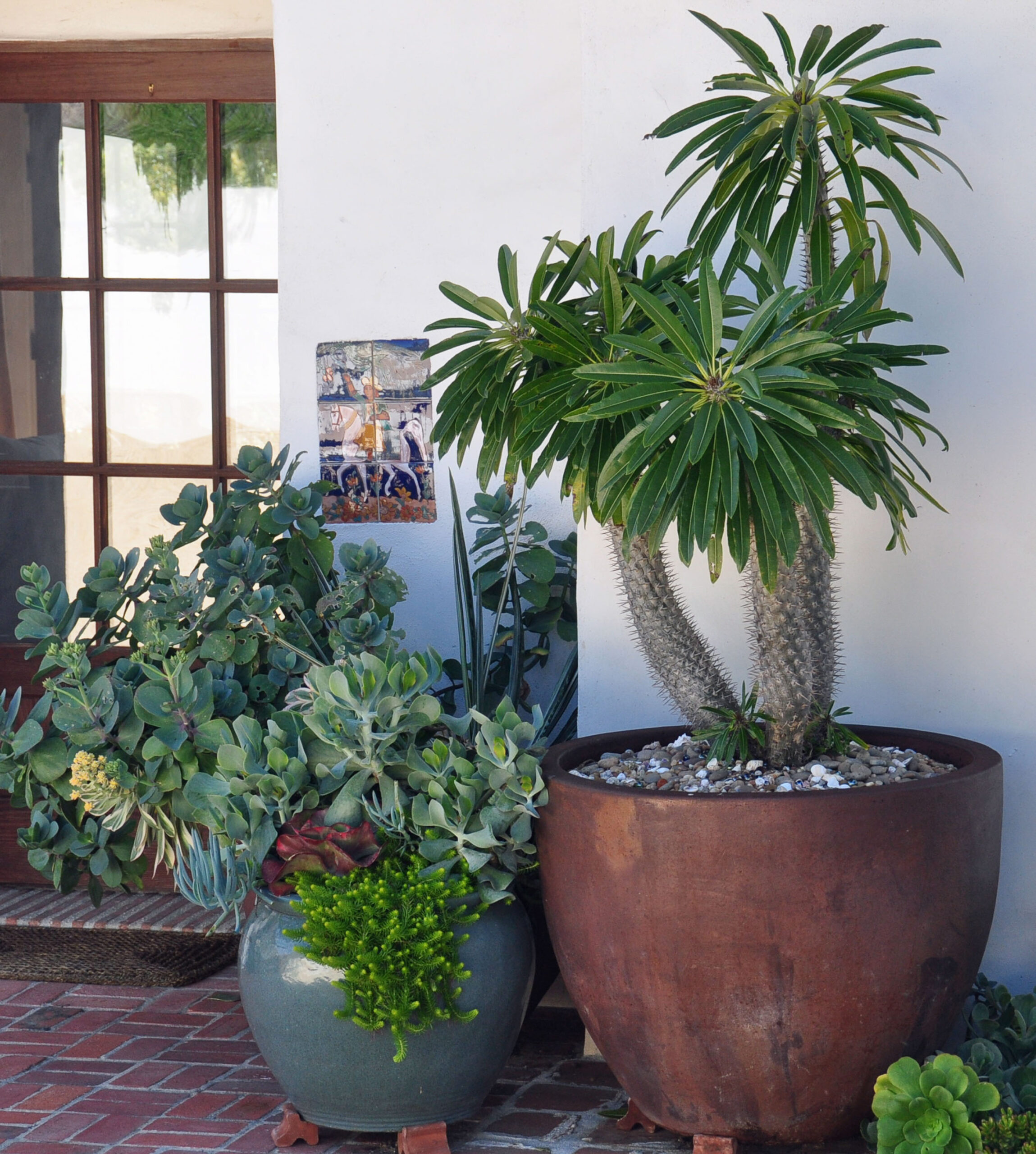

One also sees this artistry in Margie Grace’s exquisite new tome Private Gardens of Santa Barbara: The Art of Outdoor Living (Gibbs Smith), a rapturous showcase of her elegant outdoor Edens, from rustic to coastal to modern. Each of the book’s made-to-age milieus represents a temple of residential garden know-how and is illustrative of nonderivative design that reflects the character of the native landscape.
“The Art of Outdoor Living” idea certainly accounts for the substantial exterior living rooms and heated floors of our era. “About 10 percent of outdoor living comes down to ‘my fort is cooler than your fort,’” Margie Grace refreshingly confesses. But at the root, “it is a way to describe a lifestyle connected to nature.”
For Margie Grace, who went from toiling in the family garden to forsaking a career in medicine after a 13-week stint as a park ranger proved she’d long lost her heart to the natural world, this is the point.

“Step outside and you hear birdsong, you smell water evaporating. It’s a rich and simple experience, but relaxed and comfortable. We take a deep breath and feel better. It’s so automatic we don’t even think of it, but it is a very profound thing. It’s experiential, there is intentionality to it.”
Landscape as soul, nature as a relief—what a thing of beauty.
Margie Grace • Grace Design Associates | gracedesignassociates.com
Photos: Grace Design Associates And Holly Lepere Johnson (Home)
